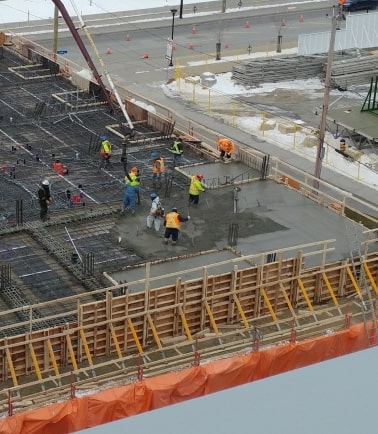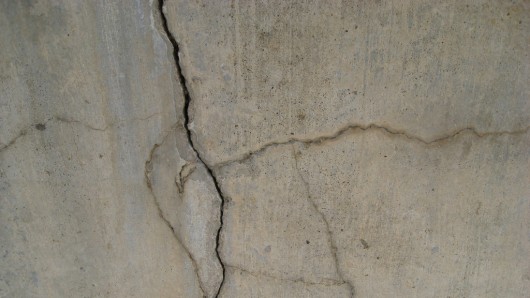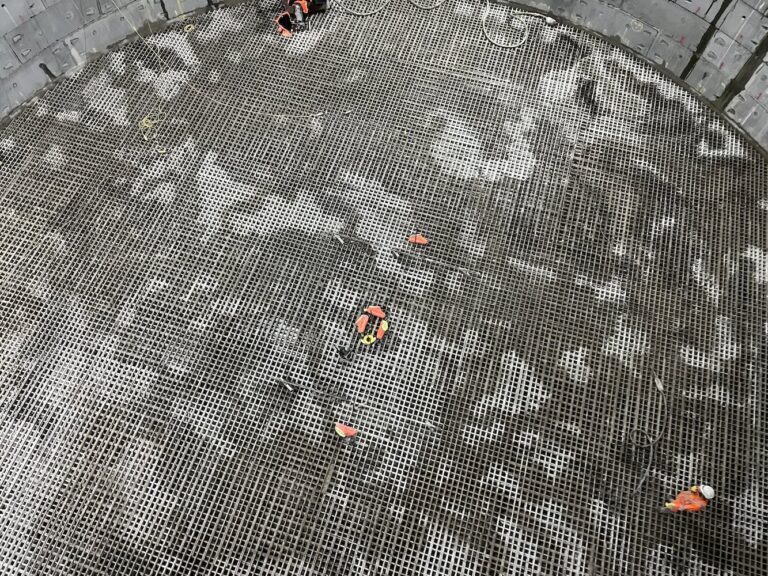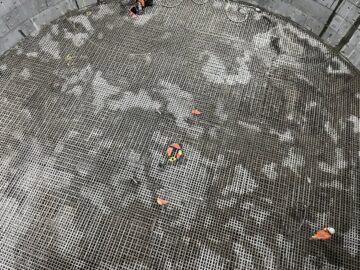As mass concrete is now an essential part of the construction industry, it is important to consider the different factors that affect its quality and strength gain. When designing and monitoring a mass concrete mix, contractors must take special consideration to the maximum temperature that the mass element concrete will be subjected to. The maximum temperature of concrete is typically in the core of the mass element. However, in insulated thinner elements this could occur near the insulated surface. Moreover, for regular mass placements, the peak will typically be reached within the first 48 hours after the pour. Although, this could vary according to the size and placement schedule. The maximum concrete temperature corresponds to the concrete temperature placement in addition to the heat rise. In this blog, we will learn about other temperature-related challenges when working on mass concrete.
Explore 12 Futuristic Technology Trends Solving Concrete's Biggest Challenges.
Be fully prepared for your next mass concrete project!
What Is Delayed Ettringite Formation (DEF)?
The main concern surrounding the allowable maximum temperature of concrete is the issue of delayed ettringite formation, typically referred to as DEF. As ettringite has limited temperature stability, it does not form at high temperatures. This is an issue when concrete reaches high temperatures. Furthermore, when high heat generation occurs the potential for volumetric expansion at later stages could lead to considerable cracking and reduce the durability of the concrete element.
The ettringite formation is a normal process that occurs during the hydration phases of cement. It is formed as a result of the reaction of the tricalcium aluminate (C3A), sulfate compounds, and gypsum. This reaction takes place during the concrete setting and is a regular product formed during the hydration process. The purpose of this reaction is to consume most of the sulfate present in the mix and prevent fast stiffening of the concrete. Initially, this is formed in the early ages and can be referred to as “primary ettringite.”

Dealing With the Maximum Temperature of Concrete and DEF
When the concrete temperature is too high at an early age, the primary ettringite becomes unstable and can lead to delayed ettringite formation. The detrimental consequences only start to appear years later. With the presence of moisture (water), the delayed ettringite formation appears and the concrete expands and cracks. Ultimately, the detrimental activity of DEF can provoke a reduction in the concrete durability and service life. This is the reason why DEF mainly occurs in foundation elements as they go through to a higher temperature. However, DEF can also occur in heat-cured elements, such as precast concrete beams.
Delayed ettringite formation is a concern when the concrete temperature exceeds 158°F (70°C). It is important to note that not all concrete mixtures and structures have the same level of susceptibility to DEF. In fact, concrete designed with SCM mixtures tends to perform much better, allowing a higher maximum temperature of concrete.

Maximum Allowable Temperature
In North America, the maximum allowable temperature of mass concrete varies depending on the project specifications. This is largely because there is no universal consensus on a specific limit. However, standards and recommendations have been put in place to guide engineers to build more durable structures. For this purpose, the ACI 201.2R “Guide to Durable Concrete” provides important specifications.
If the maximum temperature of concrete is lower than 158°F (70°C), no prevention is needed. Yet, if the temperature is between the ranges of 158°F and 185°F (70°C and 85°C), one of these approaches must be followed to minimize the risk of expansion:
- Portland cement meets the requirements of ASTM C150/150M- “Standard Specification for Portland Cement” moderate or high sulfate-resisting and low-alkali cement with a fineness value less than or equal to 430 m2/kg.
- Portland cement with a 1-day mortar strength (ASTM C109/C109M – “Standard Test Method for Compressive Strength of Hydraulic Cement Mortars”) less than or equal to 2850 psi (20 MPa).
- Any ASTM C150/C150M Portland cement in combination with the following proportions, pozzolan or slag cement.
- An ASTM C595/C595M or ASTM C1157/C1157M blended hydraulic cement with the same pozzolan, or slag cement content as listed in item three above.
Nevertheless, in no circumstances should the concrete temperature exceed 185°F (85°C).










